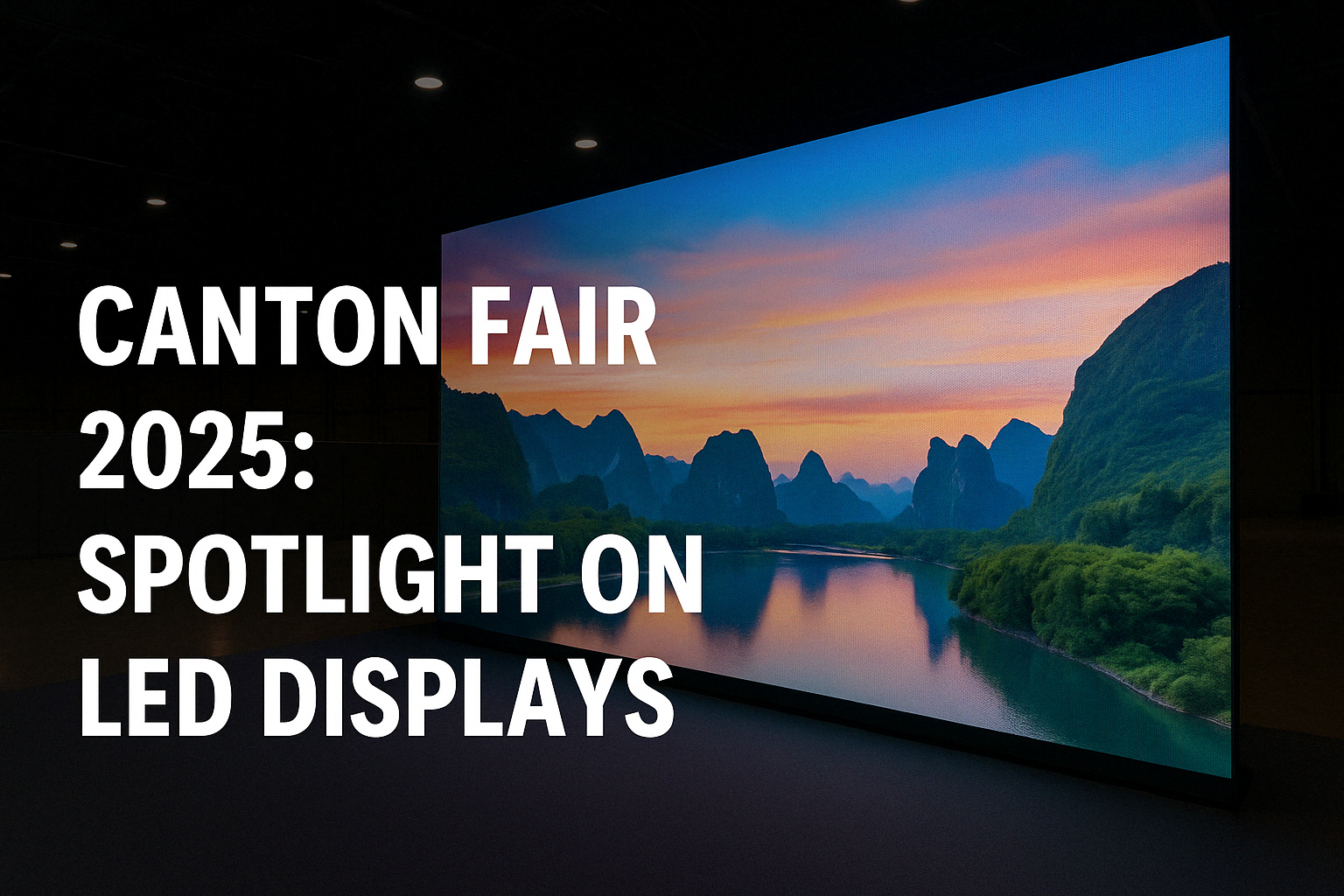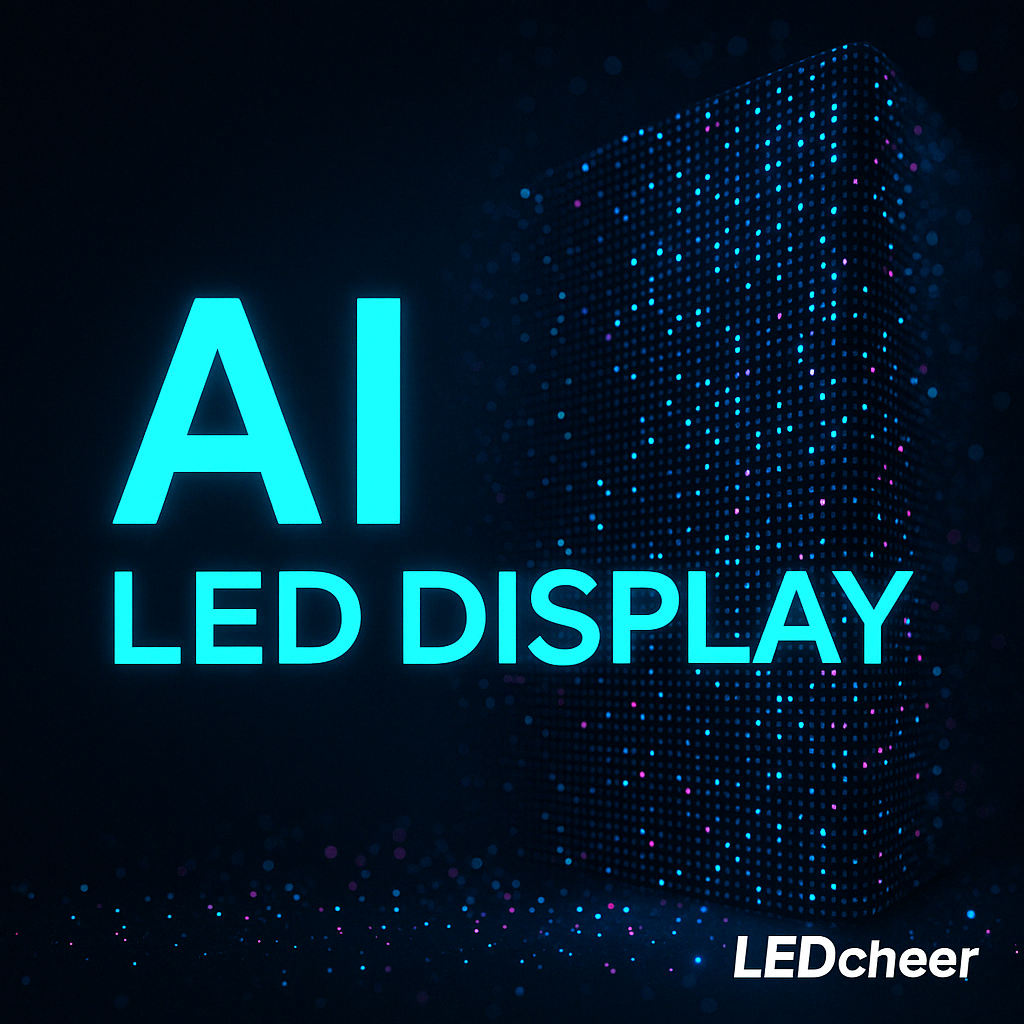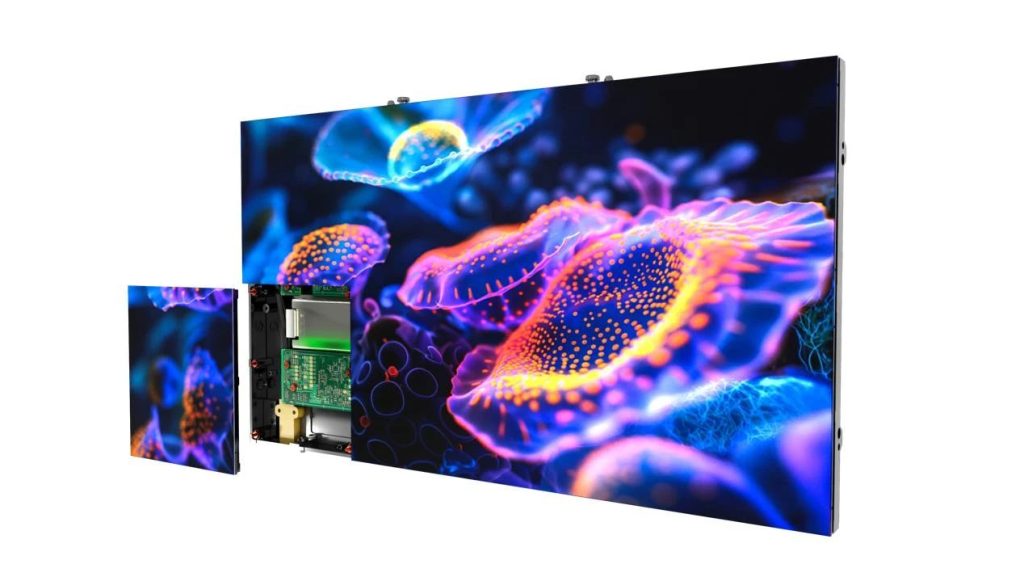-

Serie Flexible di allegria RS: La soluzione di visualizzazione del noleggio LED flessibile per qualsiasi evento
-

Canton Fair 2025 Anteprima: Tendenze del display a LED che non puoi perdere - approfondimenti da Ledcheer
-

Il futuro è luminoso: Come l'IA sta rivoluzionando la tecnologia di visualizzazione a LED
2024-12-30

Indoor Small-Pitch LED Displays: Applications and Installation Guidelines
Indoor small-pitch LED displays are gaining popularity for their high resolution, excellent image quality, and adaptability. These screens, with pixel pitches smaller than 2mm, are transforming various industries, especially for indoor applications. This article explores their uses and provides important guidelines for installation.
1. Applications of Indoor Small-Pitch LED Displays
Small-pitch LED screens excel in delivering vivid visuals at close viewing distances. Their versatility makes them an essential tool across industries.
1.1 Corporate and Control Centers
Businesses use small-pitch LED displays to showcase real-time data, notizia, and security footage. These screens provide crystal-clear visuals, enabling effective communication and decision-making. Managers and operators benefit from the high resolution, especially when viewing screens up close.
1.2 Broadcast Studios
Television stations rely on these displays for on-air visuals, live broadcasts, and background imagery. Their sharp image quality meets the stringent standards of the broadcasting industry.
1.3 Retail and Shopping Malls
Retailers use LED displays to promote products and engage customers. Positioned at storefronts or eye-level locations, these screens attract attention with their sharp visuals, making them ideal for close-up viewing.
1.4 Stadiums and Event Venues
Indoor event venues use these displays for live feeds, video replays, and announcements. Their high brightness and resolution ensure clear visuals for audiences seated close or far.
1.5 Museums and Exhibition Halls
Museums incorporate these screens for interactive exhibits and storytelling. Visitors enjoy high-quality content while engaging with modern, technology-driven displays.
2. Installation Precautions
While small-pitch LED displays offer numerous advantages, proper installation is crucial to optimize performance and longevity.
2.1 Conduct a Thorough Site Survey
Before installing the display, evaluate the space and its challenges. Position the screen where viewers can enjoy optimal angles. For example, meeting rooms require centralized placements, while retail displays should align with customer eye levels.
2.2 Manage Power and Cables
Ensure the power supply meets the screen’s requirements without overloading circuits. Use proper cable management techniques to prevent tangling and maintain signal quality.
2.3 Optimize Viewing Distance
Install the screen at the right height and angle for clear viewing. Control rooms benefit from screens placed at eye level, while retail displays should accommodate viewers at varying distances.
2.4 Ensure Proper Ventilation
LED displays generate heat, especially in enclosed spaces. Install cooling systems or provide adequate airflow to prevent overheating. This step extends the display’s lifespan and maintains image quality.
2.5 Calibrate and Maintain Regularly
Calibrate the screen after installation to achieve uniform brightness, color, and contrast. Perform regular maintenance, including cleaning and firmware updates, to ensure consistent performance.
2.6 Adhere to Safety Standards
Ground the equipment properly, especially in environments with heavy electrical usage. Follow all safety guidelines to avoid electrical hazards.
3. Conclusione
Indoor small-pitch LED displays are transforming industries with their superior image quality and versatility. They are widely used in corporate offices, control rooms, retail spaces, e altro ancora. To maximize their benefits, careful planning is essential during installation. Proper site surveys, power management, ventilation, and maintenance play key roles in ensuring optimal performance. With the right approach, these displays deliver exceptional visual experiences and long-term value.




